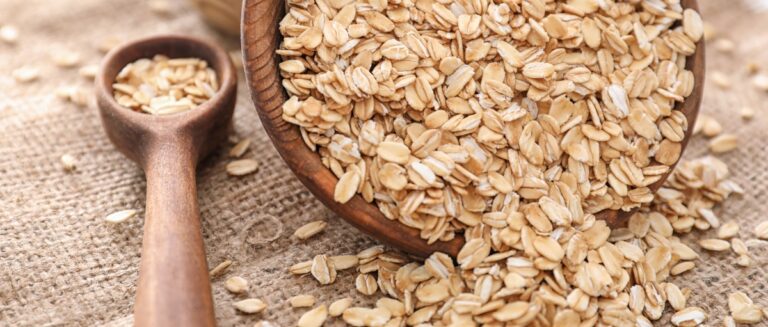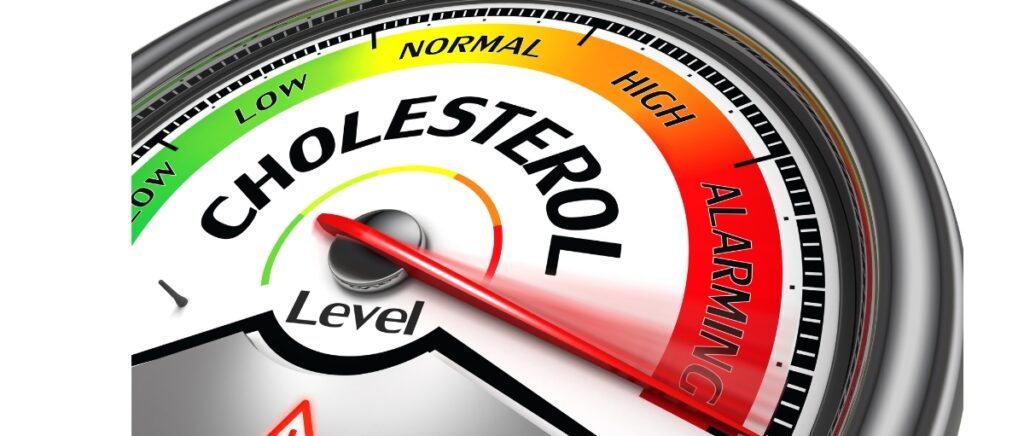As older adults, we’ve all heard about the importance of maintaining healthy cholesterol levels. But did you know that over 86 million American adults aged 20 and older have elevated total cholesterol levels? Even more concerning, nearly 25 million have levels high enough to put them at serious risk for heart disease.
The good news is that reducing your cholesterol doesn’t have to be a daunting task. With a few simple lifestyle changes and dietary tweaks, you can take control of your heart health in just 30 days.
Knowing how to lower cholesterol naturally includes understanding the difference between “good” and “bad” cholesterol and the crucial role of incorporating heart-healthy foods into your diet. A four-week plan is provided to help you make lasting changes and achieve real results.
So, whether you’ve been diagnosed with high cholesterol or simply want to take a proactive approach to your health, this guide is for you. Let’s get started on the path to a healthier heart!
Understanding Cholesterol
Before we dive into the 30-day plan to lower your cholesterol, it’s essential to understand what cholesterol is and how it affects your health.
What is Cholesterol?
Cholesterol is a waxy substance found in your blood that plays a crucial role in your body’s overall function. It helps build healthy cells, produces certain hormones, and aids in the formation of vitamin D. However, when cholesterol levels become too high, it can lead to a buildup in your arteries, increasing the risk of serious health problems such as heart disease and stroke. The 2 types of cholesterol are:
- LDL (low-density lipoprotein): This is often called “bad cholesterol” because it contributes to plaque buildup in the arteries. High levels of LDL can lead to narrowed arteries, reducing blood flow and increasing the risk of heart disease and stroke.
- HDL (high-density lipoprotein): This is known as “good cholesterol.” HDL helps remove excess cholesterol from the bloodstream by transporting it back to the liver for processing and removal. This process helps protect against plaque buildup in the arteries.
Healthy vs. Unhealthy Cholesterol Levels
So, what’s considered a healthy cholesterol level? According to the American Heart Association, your total cholesterol should be about 150 mg/dL. Here’s a breakdown of the numbers:
- Total cholesterol: about 150 mg/dL.
- LDL cholesterol: Less than 100 mg/dL.
- HDL cholesterol: Less than 50 mg/dL.
If your cholesterol levels fall outside these ranges, you may be at a higher risk for heart disease and other health problems.
The Risks of High Cholesterol
High cholesterol is often called a “silent killer” because it doesn’t present any noticeable symptoms. You may feel perfectly healthy while your cholesterol levels are steadily rising, putting your health at risk without any noticeable warning signs. This lack of symptoms makes regular health check-ups, including cholesterol screenings, extremely important. If left unchecked, high cholesterol—particularly elevated LDL (“bad cholesterol”) levels—can cause the following:
- Atherosclerosis (hardening of the arteries)
- Heart attack
- Stroke
- Peripheral artery disease
By understanding the associated risks, you can take proactive steps to high-cholesterol self-care, lower your levels, and improve your overall health.
Dietary Changes to Reduce Cholesterol
One of the most effective ways to lower your cholesterol is by making simple changes to your diet. By incorporating heart-healthy foods and limiting your intake of saturated and trans fats, you can significantly reduce your LDL levels and improve your overall health.
Heart-Healthy Foods to Embrace
Start by adding these cholesterol-lowering foods to your shopping list:
- Oats, barley, and other whole grains: Rich in soluble fiber, which helps reduce LDL cholesterol.
- Beans and legumes: Packed with fiber and plant-based protein, beans and legumes are a great addition to soups, salads, and side dishes.
- Nuts and seeds: Almonds, walnuts, and flaxseeds are high in heart-healthy monounsaturated and polyunsaturated fats.
- Fruits high in pectin: Apples, grapes, and citrus fruits contain pectin, a type of soluble fiber that lowers LDL cholesterol.
- Fatty fish: Salmon, mackerel, and sardines are rich in omega-3 fatty acids, which help reduce inflammation and protect your heart.
Foods to Limit or Avoid
Just as important as adding heart-healthy foods to your diet is reducing your intake of foods that can raise your cholesterol levels. Watch out for:
Saturated fats: Found primarily in red meat and full-fat dairy products, saturated fats can raise your LDL cholesterol. Limit your intake to less than 7% of your daily calories.
Trans fats: Often listed as “partially hydrogenated oils” on food labels, trans fats raise LDL cholesterol and lower HDL cholesterol. Avoid them as much as possible.
Added sugars and refined carbohydrates: Foods high in added sugars and refined carbs, such as sugary drinks, candy, and white bread, can contribute to weight gain and lower HDL cholesterol levels.
Embracing Plant-Based Proteins
Incorporating more plant-based proteins into your diet is a great way to lower your cholesterol while still getting the nutrients your body needs. Try:
- Replacing ground beef with lentils or crumbled tofu in tacos or spaghetti sauce.
- Use chickpeas or black beans instead of chicken in salads and wraps.
- Experiment with meatless meals, such as vegetable stir-fries or quinoa bowls, a few times a week.
By making these simple dietary changes, you’ll be well on your way to lowering your cholesterol and improving your heart health. Remember, small, consistent changes can lead to big results over time.
Exercise and Lifestyle Changes
Exercising for cholesterol is essential, as regular physical activity, along with dietary changes, significantly contributes to maintaining heart health.
The Power of Exercise
Engaging in regular physical activity can help raise your HDL cholesterol levels and reduce your risk of heart disease. Aim for at least 150 minutes of moderate or 75 minutes of vigorous-intensity exercise per week. This can include:
- Brisk walking
- Swimming
- Cycling
- Dancing
- Strength training
If you’re new to exercise, start slowly and gradually increasing the duration and intensity of your workouts. Even small amounts of physical activity can improve your cholesterol levels and overall health.
Lifestyle Changes for Better Heart Health
In addition to exercise, making other lifestyle changes can help lower your cholesterol and reduce your risk of heart disease:
- Quit smoking: Smoking lowers your HDL cholesterol and increases your risk of heart attack and stroke. If you smoke, quitting is one of the best things you can do for your heart health.
- Maintain a healthy weight: Being overweight or obese can raise LDL cholesterol and lower HDL cholesterol. Losing 5-10% of your body weight can significantly improve cholesterol levels.
- Manage stress: Chronic stress can contribute to high cholesterol and other heart disease risk factors. Find healthy ways to manage stress, such as meditation, deep breathing, or engaging in hobbies you enjoy.
- Limit alcohol consumption: Excessive alcohol intake can raise your cholesterol levels and contribute to liver problems. If you choose to drink, do so in moderation, up to one drink per day for women and up to two drinks per day for men.
The Role of Medication
For some people, lifestyle changes alone may not lower cholesterol to healthy levels. Your doctor may recommend medication to help manage your cholesterol in these cases.
The most common cholesterol-lowering medications are statins, which work by blocking an enzyme in your liver that produces cholesterol. Statins significantly reduce your LDL cholesterol levels and have been shown to reduce the risk of heart attack and stroke in people with high cholesterol.
If your doctor prescribes cholesterol-lowering medication, it’s essential to take it as directed and to continue making lifestyle changes to support your heart health. Regular check-ups with your healthcare provider can help monitor your progress and make any necessary adjustments to your treatment plan.
Your 30-Day Cholesterol-Lowering Plan
Now that you understand the key components of lowering cholesterol, including diet, exercise, lifestyle changes, and medication (if needed), it’s time to implement them. This four-week plan will help you get started on the path to better heart health.
Week 1: Getting Started
- Assess your current cholesterol levels with a blood test and set goals with your healthcare provider.
- Start making simple dietary swaps, such as replacing saturated fats with heart-healthy monounsaturated and polyunsaturated fats.
- Add 30 minutes of moderate-intensity exercise into your daily routine, such as brisk walking or swimming.
Week 2: Building Momentum
- Increase your soluble fiber intake by adding whole grains, beans, and fruits to your diet.
- Try new heart-healthy recipes that feature lean proteins, vegetables, and whole grains.
- Gradually increase the duration and intensity of your workouts, aiming for at least 150 minutes of moderate-intensity exercise per week.
Week 3: Embracing a Heart-Healthy Lifestyle
- Experiment with plant-based meals and snacks like vegetable stir-fries or roasted chickpeas.
- Add variety to your exercise routine by trying new activities, such as yoga or cycling.
- Focus on stress management techniques, such as deep breathing or meditation, to help lower your overall stress levels.
Week 4: Maintaining Progress
- Fine-tune your diet based on what works best for you, and continue to make heart-healthy choices.
- Establish long-term exercise and self-care habits that you can sustain over time.
- Schedule regular check-ups with your healthcare provider to monitor your cholesterol levels and overall heart health.
Your Journey to a Healthier Heart Starts Today
Lowering your cholesterol and improving your heart health may seem daunting, but you can achieve lasting results with the right tools and mindset. Exercising for cholesterol can be an effective way to enhance your efforts. By incorporating simple dietary changes and other lifestyle modifications, you can significantly reduce cholesterol and your risk of heart disease, ultimately leading to a healthier, more vibrant life.
Remember, small changes can lead to significant improvements over time. Start today by making one positive change, whether swapping out a sugary snack for a piece of fruit or taking a brisk walk around the block. As you build momentum and confidence, you’ll find that making heart-healthy choices becomes second nature.
Your journey to better heart health starts now. Embrace the power of change, and know that every step brings you closer to a healthier, happier you. Dedication and perseverance can lower your cholesterol, improve your overall well-being, and enjoy the many benefits of a heart-healthy lifestyle for years to come.
Sources
Centers for Disease Control and Prevention. (2023). Cholesterol facts and statistics. CDC. https://www.cdc.gov/cholesterol/data-research/facts-stats/index.html
Centers for Disease Control and Prevention. (2024). About cholesterol. CDC. https://www.cdc.gov/cholesterol/about/index.html
American Heart Association. (2024). What your cholesterol levels mean. AHA. https://www.heart.org/en/health-topics/cholesterol/about-cholesterol/what-your-cholesterol-levels-mean
National Center for Biotechnology Information. (2023). Impact of lifestyle on cholesterol levels. NCBI. https://www.ncbi.nlm.nih.gov/pmc/articles/PMC10495817/
Food and Drug Administration. (2024). Trans fat. FDA. https://www.fda.gov/food/food-additives-petitions/trans-fat
Mayo Clinic. (n.d.). High blood cholesterol: How to reduce it. Mayo Clinic. https://www.mayoclinic.org/diseases-conditions/high-blood-cholesterol/in-depth/reduce-cholesterol/art-20045935
American Heart Association. (2022). Getting more exercise than guidelines suggest may further lower death risk. AHA. https://www.heart.org/en/news/2022/07/25/getting-more-exercise-than-guidelines-suggest-may-further-lower-death-risk
Centers for Disease Control and Prevention. (2023). What counts as physical activity? CDC. https://www.cdc.gov/physical-activity-basics/adding-adults/what-counts.html
Centers for Disease Control and Prevention. (2024). Heart disease and stroke. CDC. https://www.cdc.gov/tobacco/campaign/tips/diseases/heart-disease-stroke.html
National Center for Biotechnology Information. (2016). The effects of lifestyle changes on heart health. NCBI. https://www.ncbi.nlm.nih.gov/pmc/articles/PMC4987606/
Medical News Today. (2018). Cholesterol and its impact on health. Medical News Today. https://www.medicalnewstoday.com/articles/313207
Department of Veterans Affairs. (n.d.). Limit alcohol for healthy living. VA Prevention. https://www.prevention.va.gov/Healthy_Living/Limit_Alcohol.asp
Cleveland Clinic. (2024). Statins: How they work and side effects. Cleveland Clinic. https://my.clevelandclinic.org/health/treatments/22282-statins











